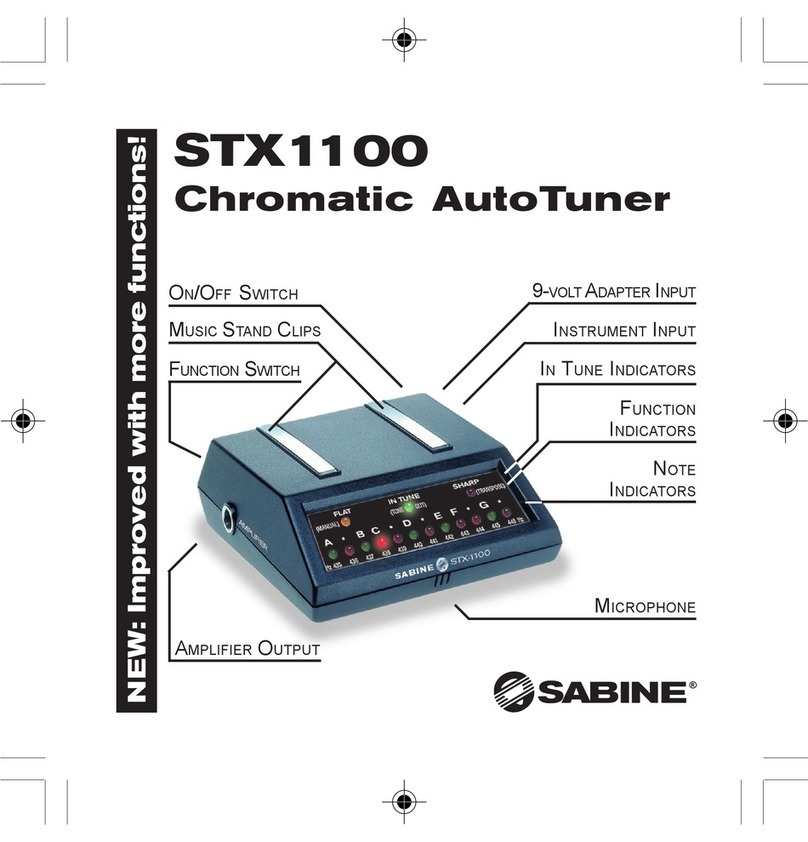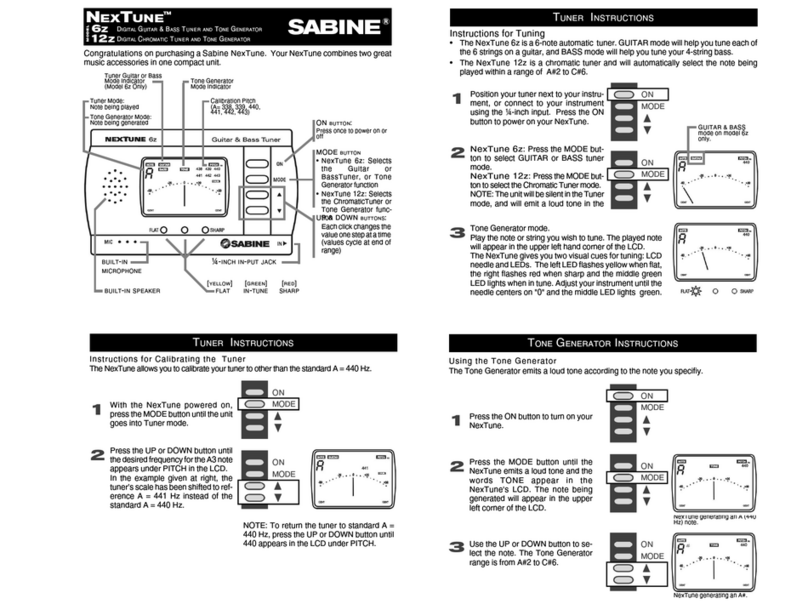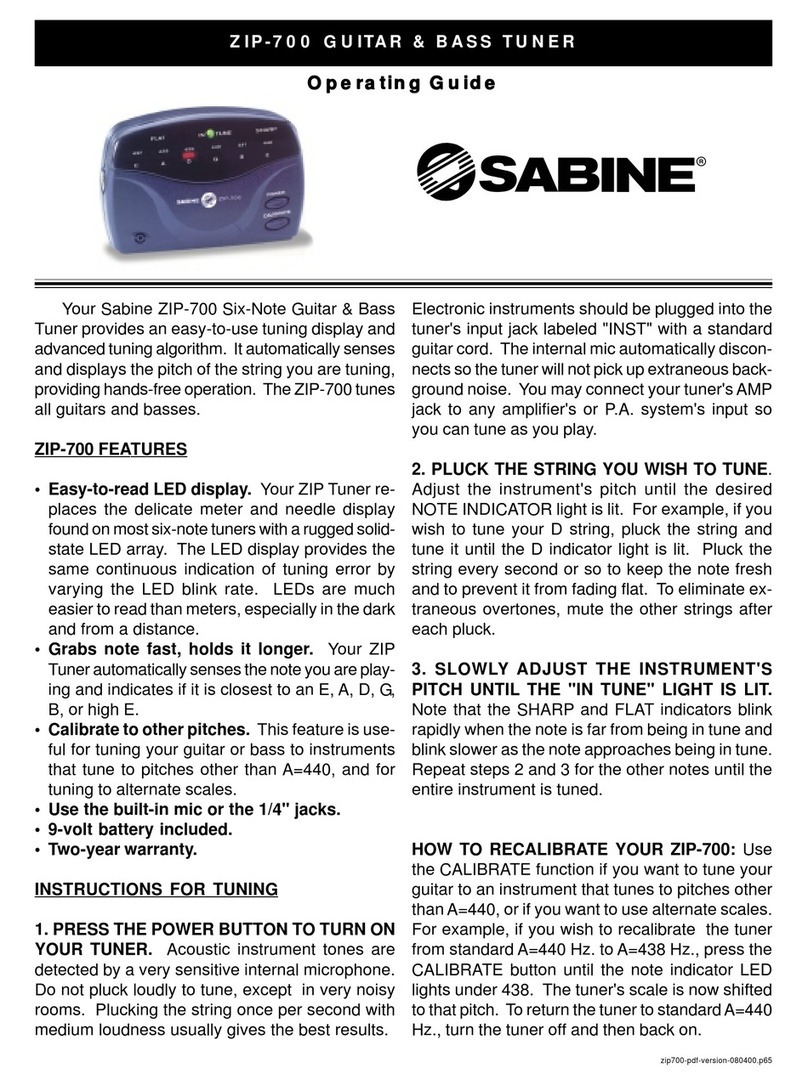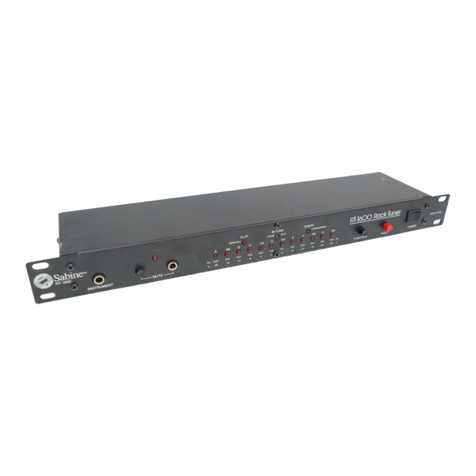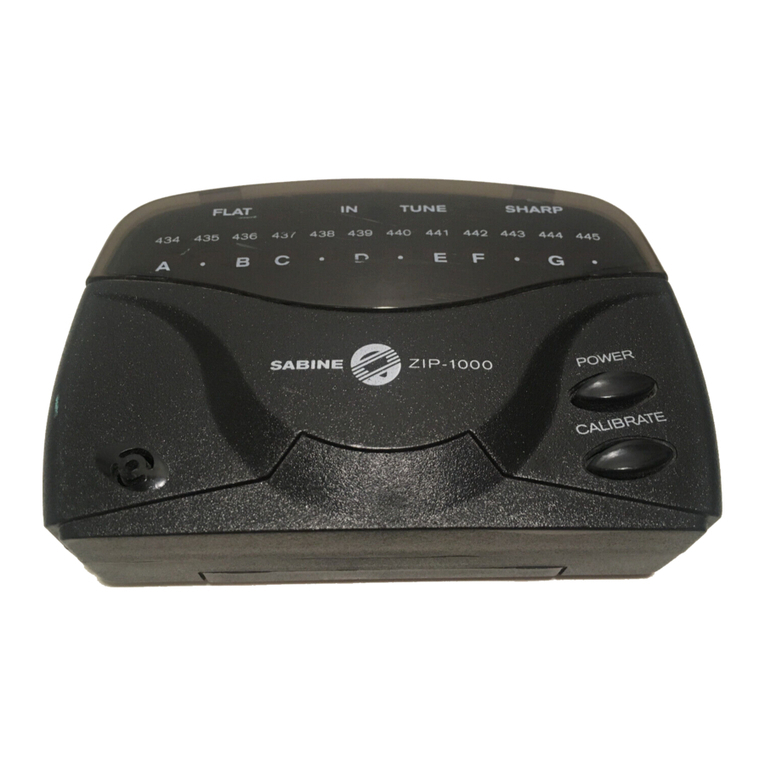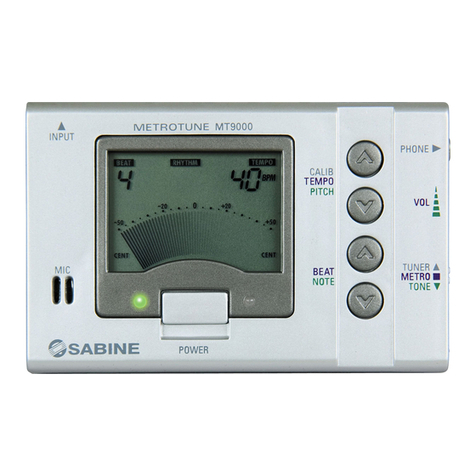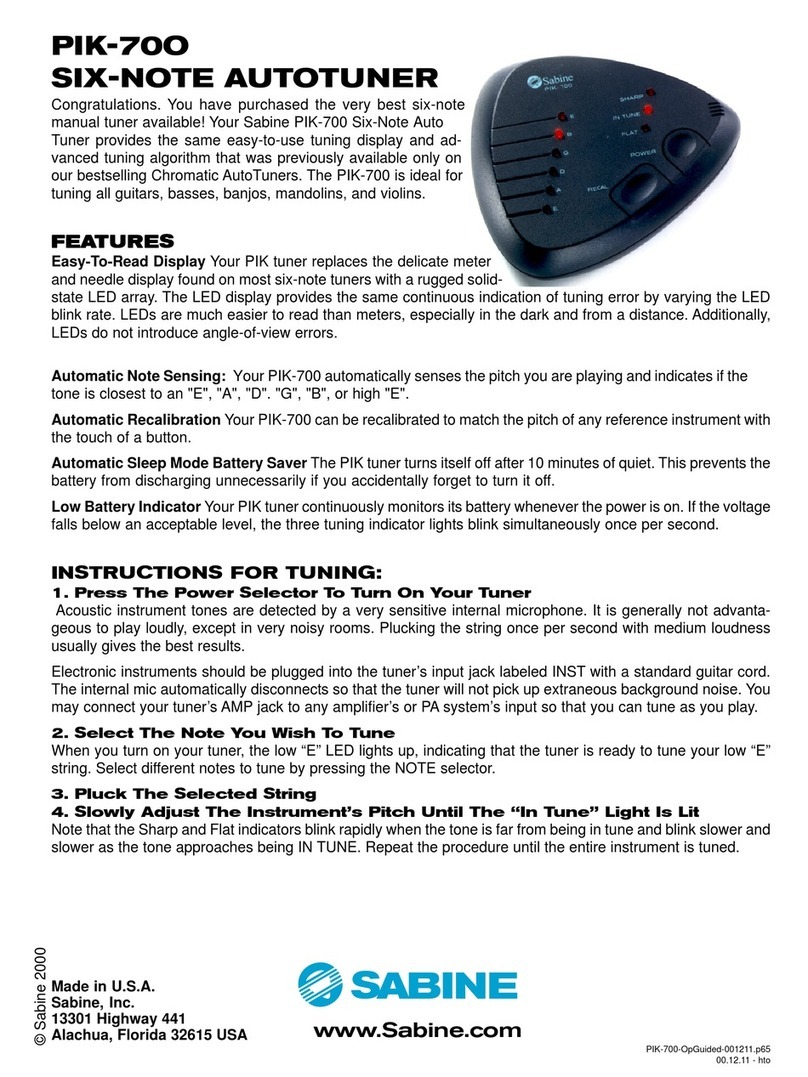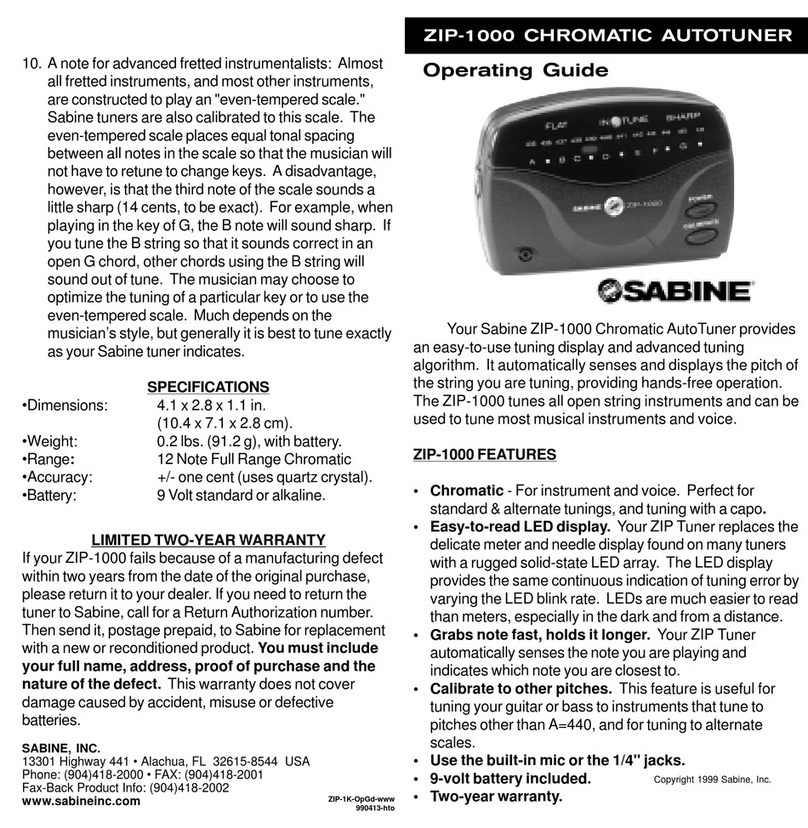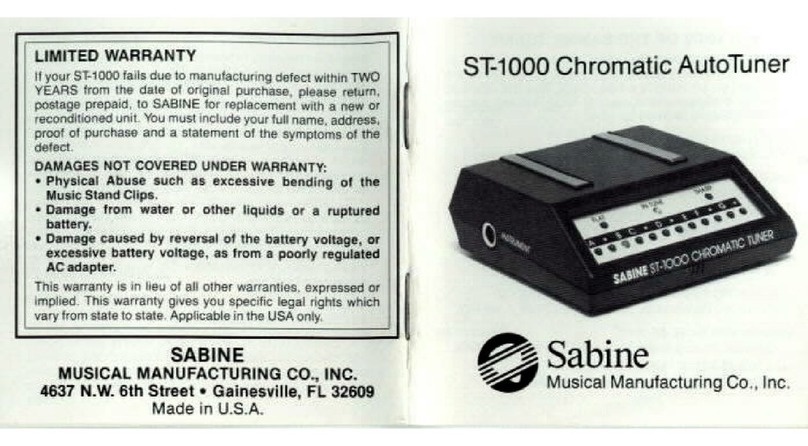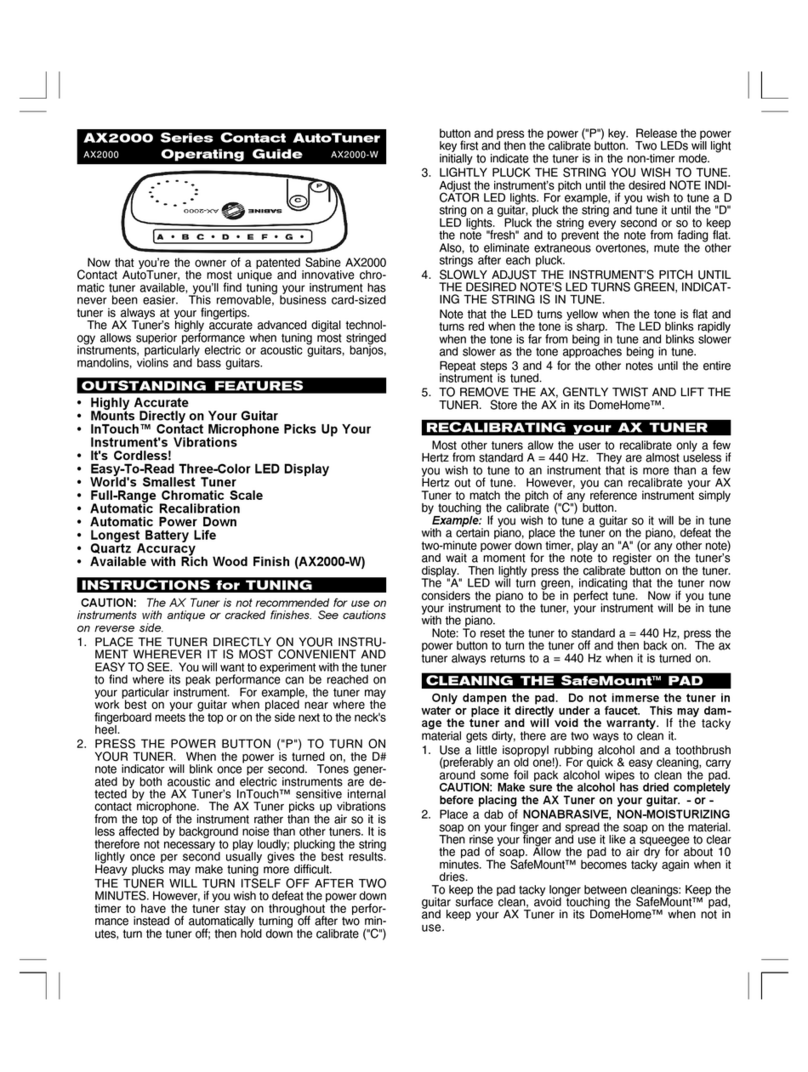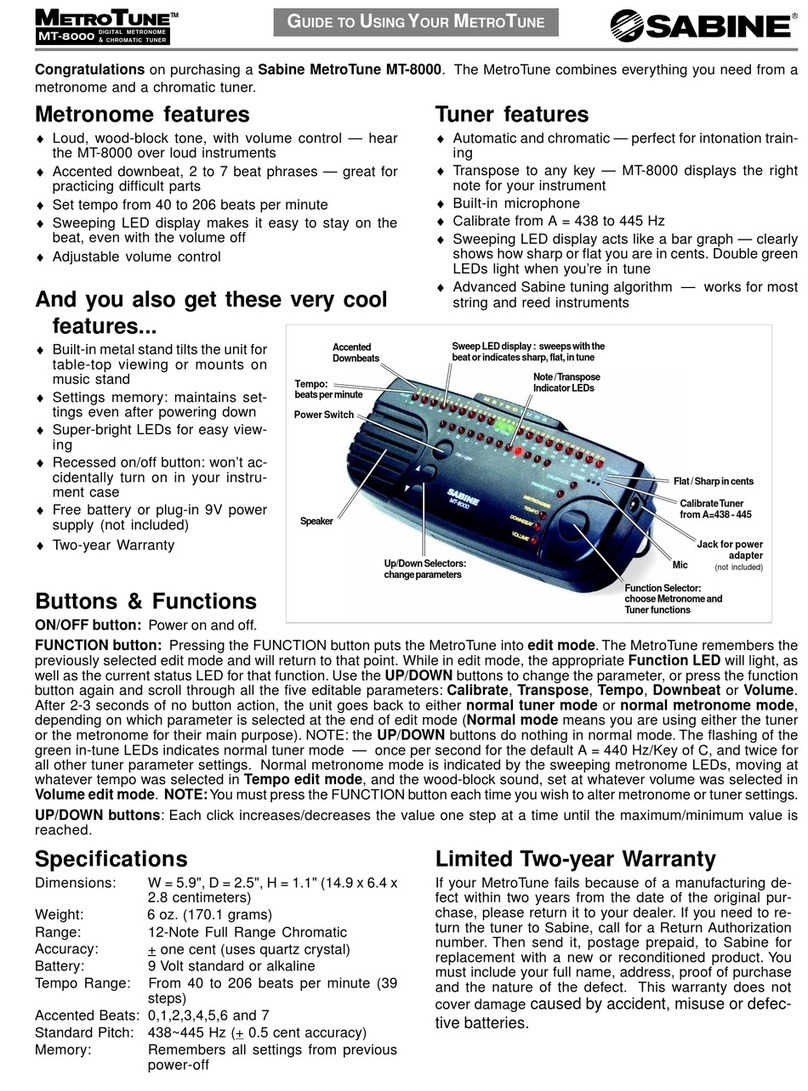INSTRUCTIONS FOR TUNING
1. PRESSTHEPOWERBUTTONTOTURNONYOUR
TUNER. Acoustic instrument tones are detected
by a very sensitive internal microphone. Do not
pluck loudly to tune, except in very noisy rooms.
Plucking the string once per second with medium
loudness usually gives the best results.
Electronic instruments should be plugged into the
tuner's input jack labeled "INST" with a standard
guitar cord. The internal mic automatically dis-
connects so the tuner will not pick up extraneous
background noise. You may connect your tuner's
AMP jack to any amplifier's or P.A. system's input
so you can tune as you play.
2. PLUCK THE STRING YOU WISH TO TUNE. Ad-
just the instrument's pitch until the desired NOTE
INDICATOR light is lit. For example, if you wish to
tune your D string, pluck the string and tune it until
the D indicator light is lit. Pluck the string every
second or so to keep the note fresh and to pre-
vent it from fading flat. To eliminate extraneous
overtones,mutethe other strings after each pluck.
3. SLOWLY ADJUST THE INSTRUMENT'S PITCH
UNTIL THE "IN TUNE" LIGHT IS LIT. Note that
the SHARP and FLAT indicators blink rapidly
when the note is far from being in tune and blink
slower as the note approaches being in tune.
Repeat steps 2 and 3 for the other notes until the
entire instrument is tuned.
HOW TO RECALIBRATE YOUR ZIP-700: Use the
CALIBRATE function if you want to tune your guitar
to an instrument that tunes to pitches other than
A=440, or if you want to use alternate scales. For
example, if you wish to recalibrate the tuner from
standard A=440 Hz. to A=438 Hz., press the CALI-
BRATEbuttonuntil thenoteindicatorLEDlightsunder
438. The tuner's scale is now shifted to that pitch. To
return the tuner to standardA=440 Hz., turn the tuner
off and then back on.
TUNING TIPS
Many musical instruments have peculiarities that cause an-
noying tuning problems. Most of these peculiarities are
overcome by following these simple procedures:
1. Pluck one string at a time.
2. Pluck the instrument once per second to keep the note
"fresh" while you are tuning. Notes go noticeably flat a
second or two after being plucked. If tuning a higher-
pitchedinstrument(suchasamandolin),pluckalittlefaster;
foralower-pitchedinstrument(suchasabass),pluckslower.
3. Do not pluck loudly. Generally light to medium volumes
provide purer tones that are easier for tuners to analyze.
4. Pluck the strings with the flesh of the thumb. Fingernails
and flat picks add overtones and slow the tuning process.
5. Tune from a pitch that is flat up to the pitch you desire. This
procedureremovesanyslackinthegearsoftheinstrument’s
tuning heads. If you tune from SHARP to IN TUNE, the
gears will slip as you play, and the instrument will go flat
after a few minutes of playing.
6. If you have difficulty getting a note to register on the tuner,
try touching the other strings lightly to stop their sympa-
thetic vibrations. This will eliminate any extraneous over-
tones that may disturb the tuning.
7. Use good strings. (We recommend Sabine NitroStasis™
Premium Strings.) Old strings lose their uniformity and do
not vibrate evenly. New strings stretch flat as you play.
8. All sources of friction cause tuning problems. For example,
if the slot in an instrument’s nut is too tight, the string will be
pulled flat as it is played. A tight nut (or capo) will cause the
string’s pitch to change in steps rather than evenly.
9. Avoid pressure on the instrument while tuning. Even mod-
eratepressureontheneckofaguitarwillcauseanoticeable
change in pitch. Also, press the strings straight down to the
fingerboard. Bending the strings sideways is very com-
mon, especially on difficult chords, but causes the strings
to be pulled sharp.
10. A note for advanced fretted instrumentalists: Almost all
fretted instruments, and most other instruments, are con-
structed to play an "even-tempered scale." Sabine tuners
are also calibrated to this scale. The even-tempered scale
placesequaltonal spacing between all notes in the scale so
that the musician will not have to retune to change keys. A
disadvantage, however, is that the third note of the scale
sounds a little sharp (14 cents, to be exact). For example,
when playing in the key of G, the B note will sound sharp. If
you tune the B string so that it sounds correct in an open G
chord,other chords using theB string will sound outof tune.
The musician may choose to optimize the tuning of a par-
ticular key or to use the even-tempered scale. Much de-
pends on the musician’s style, but generally it is best to
tune exactly as your Sabine tuner indicates.


